#LCD splicing panel
Explore tagged Tumblr posts
Text
Ultimate Visual Experience with LCD Video Wall!
Borderless display, endless possibilities! High-definition, seamless visuals - the LCD video wall brings you a breathtaking visual feast. Whether for meetings, exhibitions, or advertising, it perfects every detail. Give your content a grand stage and ignite the audience's passion instantly!
https://yodavideowall.com/optimizing-surveillance-efficiency-and-safety-the-active-use-of-lcd-splicing-screens-in-the-security-industry/
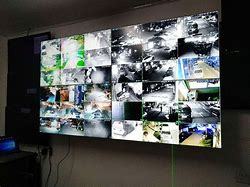
#LCD splicing panel#LCD splicing TV wall#splice faq#splice screen#screen splicing#splicing screen#splicing display
1 note
·
View note
Text
Learn more about the advantages of LCD Panel Video Wall
Learn more about the advantages of LCD Panel Video Wall In modern commercial and public spaces, visual display has become one of the key means to attract attention and convey information. LCD Panel Video Wall, with its unique advantages of high-definition display and seamless splicing, is being widely used in various industries and has become a powerful tool to enhance brand image and enhance…
0 notes
Text
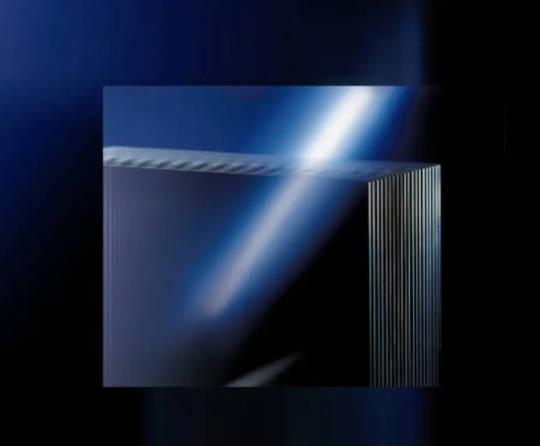
ULTRA-THIN LCD PANEL SUBSTRATE GLASS
Support to drawings processing, any size color thickness can be customizedProduct technology: silkscreen, tempered, coated, open hole, etc..Can be customized square, round, trapezoidal, hexagonal, splicing tempered and other kinds of shaped glass, can be customized according to the drawings;Edge processing: straight edge, round edge, shaped edge;Corner processing: right angle, safety corner, rounded corner, cut corner.
0 notes
Text
Competition between small-pitch LED displays and LCD screens is fierce
As LED electronic screen technology continues to mature, 4K high-definition display technology has now been achieved. While major display companies are developing 4K high-definition resolution, they are also rapidly developing in the direction of 8K ultra-high definition. As a member of the display industry, LED display manufacturers are no exception. In the future, the competition between small-pitch LED displays and LCD screens will become increasingly fierce. Here is everything about small pitch LED displays.
As early as 10 years ago, the LED electronic screen industry began to compete for the market share of LCD splicing screens. However, due to the inherent defect that LED displays may appear grainy when viewed at close range, they were unable to compete effectively with LCD splicing screens. At that time, large-size display screens were mainly occupied by LED displays, while LCD splicing screens occupied the small-size display market.
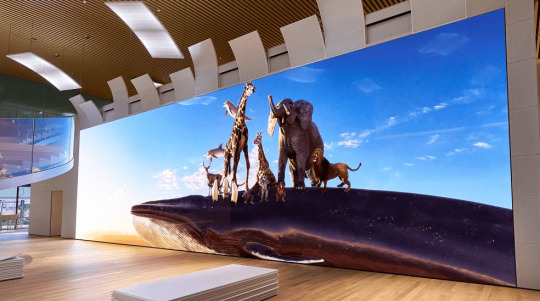
As LED display technology and the upstream and downstream industry chains continue to mature, small-pitch LED displays are gradually emerging. Even when viewed at a close distance, high-definition images can be displayed clearly. At the same time, the splicing gaps of LCD splicing screens are also constantly shrinking. However, due to the high price of small-pitch LED displays, they are mainly positioned in the high-end market, while LCD splicing screens occupy the mid-to-low-end market at lower prices. Do you understand the difference between LED and LCD panels?
According to relevant statistics, in 2013, small-pitch LED displays accounted for 12% of the market share in the large-screen splicing market. Although it only accounts for one-tenth of the entire display market, it marks a good start. In the future, the share of LED display screens in the market is expected to further increase. With the continuous upgrading of LED electronic screens, the spacing of small-pitch displays is getting smaller and smaller, the picture quality is getting clearer, and features such as refresh rate, resolution, seamless splicing of large areas, and color brightness consistency are also constantly improving. LED display manufacturers have begun to enter the large-screen display market in control rooms.

At present, more and more small-pitch LED displays are beginning to occupy the market share of DLP splicing and LCD splicing screens. Although high brightness is one of the advantages of LED outdoor displays, indoor displays do not require excessive brightness. Therefore, LED display manufacturers have adjusted the brightness of LED indoor displays. This can be achieved through control software, or by adding an ambient light-sensing module to the screen so that the screen can automatically adjust according to the brightness of the surrounding environment. The brightness range of small-pitch LED displays can be 100-1200cd, which basically meets the brightness requirements of indoor displays, and reducing the brightness will not affect viewing comfort, while grayscale and image quality clarity will not be affected. Do you know the current price of outdoor LED displays?
At present, the small-pitch LED displays produced by LED display manufacturers are mainly SMD packaging. This technology is quite mature and can achieve large-scale production, and the price is relatively reasonable. However, as the pitch becomes smaller and smaller, the packaging process becomes more and more complex. Especially when the point pitch is below 1.0mm, the dead light rate and false solder rate increase, and the cost also increases accordingly. To solve this problem, LED packaging manufacturers and LED display manufacturers have introduced a new packaging method, namely four-in-one Mini LED and COB packaging technology. These two technologies can achieve large-scale production of small-pitch LED displays with a point spacing of less than 1.0mm.
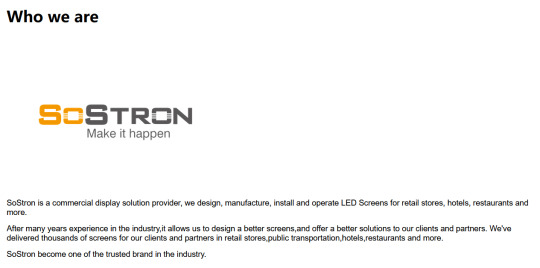
At present, these two new packaging technologies have been widely used in security, surveillance, command centers, education, medical and commercial display markets, and continue to capture market share originally belonging to LCD splicing screens. Today, the market positions of small-pitch LED displays and LCD splicing screens are getting closer and closer. In the future, as small-pitch technology continues to mature and prices gradually decrease, it is possible to replace LCD splicing screens, occupy the small-size display market, and enter the civilian market.
Thank you for watching. I hope we can solve your problems. Sostron is a professional LED display manufacturer. We provide all kinds of displays, display leasing and display solutions around the world. If you want to know: Technical Solutions for Security Small-Pitch LED Displays. Please click read.
Follow me! Take you to know more about led display knowledge.
Contact us on WhatsApp:https://api.whatsapp.com/send/?phone=8613570218702&text&type=phone_number&app_absent=0
1 note
·
View note
Text
Splicing Screen
Email: [email protected]
WhatsApp & Wechat: +86 18038197291
www.xygledscreen.com
Both LED and splicing screens are popular options for displaying digital signage, but what's the difference between the two? LED screens are superior to splicing screens in almost every way, but there are still some situations where using splicing screens makes sense. This article will cover the differences between LED and splicing screens and how to choose between them based on your needs.
What is a splicing screen?
In simple terms, a splicing screen refers to a complete unit of an LCD video wall. This unit can usually serve as a monitor but will still chip in if you need a big screen for LCD splicing. This means that these screens are not just monitors that can be used for different functions.
Splicing screens are ideal when used in areas with little space available because the units are compact.
If you're going with screen splicing, we recommend using it in places where the screen will always stay close together, like schools or restaurants.
Splicing is the process through which images from multiple sources are combined on one screen. With screen splicing, the images remain in their original format, and no adjustments must be made. With LED screens, the images must be edited before they can be viewed on the screen properly. You could say that this editing would make them less pure than those screens created by screen splicing.
But there's no definite answer as to whether one is better, so it comes down to personal preference more than anything else.
What is seamless splicing technology?
Seamless splicing technology is a technique used in digital video production that creates the illusion of uninterrupted action when displaying images together. This technology is achieved by overlaying the end of one clip with the beginning of another clip so that both clips seamlessly dissolve into each other. This process requires large screens and special projection technology.
The latest advancement in seamless splicing technology uses led screens for digital video production. Since each led pixel acts as its own independent light, you no longer need to worry about inconsistencies in image quality between individual pixels. That's why many film studios are ditching traditional screen materials like seamless splicing film and choosing digital LED screens instead. So what exactly are these new digital led screens? And how do they stack up against their seamless splicing film counterparts?
Comparison of splicing screen and LED screen (Advantages & Disadvantages)
The difference between splicing screens and LED screens can best be seen by looking at the pros and cons of each. Only this way will you be able to determine which one suits your needs better and make an educated decision.
Advantages of Splicing screens
High resolution - This is one of the most significant advantages of a splicing screen over an LED screen. A single pixel cannot be resolved on a led screen, but it can be on a splicing screen. It is also possible to superimpose the resolution to display at full HD or higher resolutions with a splicing screen, whereas this is not possible with LED screens. Clarity is thus very high in the case of a splicing screen.
Proper brightness - An important aspect of good image quality is appropriate brightness. With LED screens, the luminance level varies significantly based on the angle from which the screen is being viewed, making them unideal for long-term viewing. However, with a splicing screen, there are no such variations, and uniformity ensures no glaring differences when viewed from any angle.
High contrast ratio - Splicing screens usually have a high contrast ratio. The figures vary from 1200:1 to 10000:1 for an LCD panel.
Reliability - With a considerably low usage rate, splicing screens can last up to five times longer than an LED screen before showing signs of wear and tear. It is also more expensive, so there is less chance of replacement costs than LED screens.
Adaptable screen - Due to its ability to support various formats, a splicing screen is much more adaptable than an LED screen. You can even display signals from several input sources by switching a matrix.
Disadvantages of Splicing screens
Restricted to indoor use - While there are some models that do not have this disadvantage, it is true that a majority of splicing screens are composed of panels that can easily get damaged by water droplets and dust particles. Most outdoor events would require an LED screen instead.
Presence of seams - One major difference between these two types of screens is their visibility. A splicing screen's seam lines are visible due to their tendency to reflect light at specific angles. Led screens don't have this problem, and as a result, seem more natural to the human eye.
Advantages of LED screens
No seam lines - As previously mentioned, one of the disadvantages of a splicing screen is its tendency to produce reflecting light from the edges (visible seams). On the other hand, LED screens emit photons uniformly without any gaps between pixels. As such, they are more suitable for viewing purposes.
No air gap - Since there is no air gap in an LED screen like there is in a splicing screen, colors appear to be brighter and clearer than they would on an equivalent model made out of liquid crystals.
Adjustable brightness - You can easily adjust the brightness of a LED screen, which isn't really possible with a splicing screen. Also, the active brightness conditioning in LED video walls allows for playback adjustment in different lighting conditions.
Wide range of colors - Another difference between splicing screens and LED screens is that LEDs can display a wide color gamut, while splicing screens are limited to red, green, blue, yellow, and white. Comparable options are also available for splicing screens, but they are more expensive than their counterparts. Although this factor isn't as important in video walls, it is still worth considering.
Weather-resistant and sunscreen - LEDs are waterproof, so you will never need to worry about raindrops ruining your screen. They are also easy to clean, requiring only a gentle wipe to remove dirt and grime. This is why most outdoor displays are LED screens, whereas a splicing screen would be a better option inside environments where durability is of greater concern.
No ghosting or distortion - LED video walls give a clear picture free of ghosting and distortion. In the worst-case scenario, pixelating might occur, but this is not a common issue.
Disadvantages of LED displays
Lower resolution - LED screens have a much lower resolution than a splicing screen. This is because a LED is a single-point light source, whereas liquid crystals can generate individual points of light. This means that LED screens are unable to reproduce images as sharply. But if you're looking for something to watch outdoors, an LED screen is likely your best bet because of its weather resistance and sunlight readability.
Low contrast ratios - LED screens are usually low-contrast displays, meaning the difference between black and white is not as noticeable. This can be fixed by installing a screen hood, but this isn't always an option.
Price - LED screens are more expensive than splicing screens. The cost of repairs and upgrades is also higher for LED screens than for splicing screens. This is because LED screens have many tiny parts, each needing to be individually replaced should it break. Splicing screens, however, only have a few large parts, making them easier to repair.
Need for auxiliary cooling - LEDs tend to heat up in outdoor conditions, leading to the need for a dedicated cooler. This isn't really necessary with a splicing screen since it doesn't generate heat.
How to choose the right display for your application?
Shopping for a video wall display can be difficult. Many people will say that an LED screen is the best option, but many other factors must be considered when making this decision. So, splicing screen or led screen, which is better? Keep the following factors in mind:
-Physical mounting location: If you want to use the display outdoors or in areas with moisture exposure, it's best to go with a LED screen, which is usually waterproof.
-Cost of installation and maintenance: Splicing screens are generally less expensive than LED screens. It may not seem like much at first, but over time these savings could add up significantly.
-Need for color correction: Splicing screens require no color correction because they are made up of individual pixels. On the other hand, LED screens require color correction because each pixel emits its own light wavelength, so some colors look different than others.
-Type of content to be displayed: If your application needs high definition, then splicing screens are definitely your best bet. But if you need something more affordable, you're probably looking for an LED screen.
-Approximate brightness needed: With LEDs, it's important to remember that higher brightness levels will result in a too-bright problem. However, with a splicing screen, it doesn't matter how bright the image is.
Conclusion
There you have it. A comparison of splicing and LED screens is in order, as well as which is the better option. Splicing screens are slightly cheaper than their counterparts, largely due to the different manufacturing processes for both types. And while LEDs are more expensive and limited in display quality, remember that they are capable of many applications, making them suitable for advertisers.
0 notes
Text
Interactive slide screens are an innovative display method that allows for interactive presentations. They are also known as slide TVs or track screens, and can automatically or manually slide along a track on a display screen. The display panels or LCD splicing screens can be arranged on an exhibition wall, similar to a coordinate axis as the background, while a specially designed sliding mechanical structure is placed in front to suspend the LCD screen. The software and controller set different positions on the track as touch points. When the audience presses or automatically moves the LCD screen on the track, the LCD screen will play the corresponding content automatically at each touch, which can be images, pictures, text or videos. The content can be synchronized with the background wall to provide detailed explanations during playback, making the display more specific, comprehensive, and impressive, leaving a lasting impression on customers or visitors.
There are two methods to slide the interactive slide screens, one is to manually push the screen along the track, and the other is to automatically sense the slides. Both methods can be customized according to specific usage needs.
0 notes
Text
Number of Units Sold by TCL Technology Group
TCL Technology is an electronics company based in Huizhou, Guangdong Province. The semiconductor display business TCL CSOT (TCL China Star Optoelectronics Technology Co.) is segmented into large-sized, medium-to-small-sized products and Moka Technology.
The company’s main businesses are the semiconductor display business, new energy photovoltaic, and semi-conductor materials. The semiconductor display business TCL CSOT (TCL China Star Optoelectronics Technology Co.) is segmented into large-sized, medium-to-small-sized products and Moka Technology.
In the large-size segment, TCL CSOT sells TV panels that include 55-inch, 65-inch, and 75-inch products, 8K and 120 HZ high-end TV panels, interactive whiteboards, digital signage, and splicing screens. In FY2021, the company sold 63,324,000 units in this segment resulting in a 38% increase in sales volume compared to FY2020 YoY.
In the medium-to-small-sized segment, the company sells e-sports displays, LTPS (Low Temperature PolySilicon LCD) notebook panels, LTPS tablet PC panels, LTPS mobile phone panels, VR/AR display products, and laptop products equipped with Mini LED backlighting. During FY2021, the company sold 96,220,000 units resulting in a 3% decrease in sales volume as compared to FY2020 YoY. It is also expanding its 6th generation LTPS LCD display panel production line to meet consumer demand.
#Number of Units Sold by TCL Technology Group#Gross profit of TCL Technology 2011-2021#Tcl technology group annual report#Tcl net worth 2022
0 notes
Text
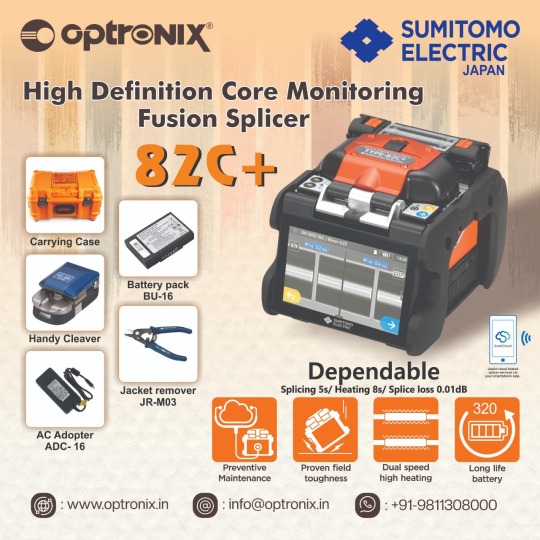
Fusion Splicer 82C plus for Fttx- Get low splicing machine in Sumitomo Splicing machine in India.
>Wide and high resolution touch panel -5" touch screen color LCD display
> Smartphone-like easy operation
> Faster 5s splice in SM Quick Mode
> Reduced 8s heat shrink time
> Dual ovens with flexible clamps
#fusion splicer#fiber optic cable#fiber fusion splicing#optical splicing machine z2c#ofc splicing machine#fiber joint machine
0 notes
Text
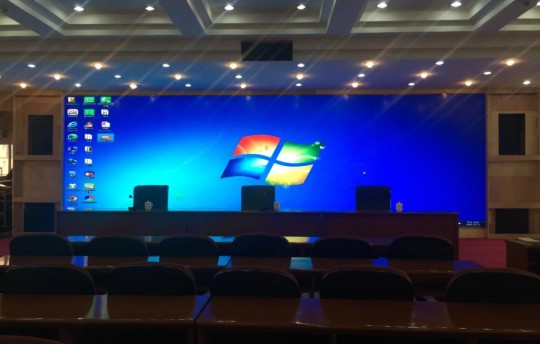
Conference Room Solutions
The display part of the current mainstream conference room large-screen display system solutions mainly includes LCD splicing screen, conference panel, LED display, dlp large screen, projection, etc., together with audio, input computer, etc. to form a comprehensive display system.
0 notes
Text
Multi screen display, computer multi screen display, improve work efficiency
Multi screen display, computer multi screen display, improve work efficiency
multi screen display is a high-performance multi screen card designed for the deeper application requirements of today’s PC. It enables a PC to support multiple VGA displays, televisions, BSV LCD splicing screens or DVI digital flat panel displays. It is specially designed for today’s graphics and image applications, especially for the development, design, editing, control and multimedia of…
View On WordPress
0 notes
Text
Basic introduction of LED display
The led display is a display carrier composed of small lamp beads through display. These small lamp beads are called light-emitting diodes in the industry. It adopts low-voltage scanning drive and has the characteristics of low power consumption, long service life, low cost, high brightness, low failure, large viewing angle, and long visual distance.
So some models of Led display products in the industry are P+digits. What does this mean? For example, the
p10 led module
produced by wei ye optoelectronics refers to a panel with a distance of 10 mm between two lights, while a p6 led module refers to a distance of 10 mm between two light-emitting diodes, which are generally used as Single and double color outdoor module.
The led display is divided into full-color, single-color and dual-color. Generally, at the entrance of a store or shop, a kind of led displays outdoor with scrolling font advertisements, use more monochrome screens, and use more full color outdoor displays for indoor and outdoor large advertising screens, conference rooms, and stage performances.
Moreover, the LED display has the characteristics of seamless splicing, which is one of its advantages, and this is not possible with LCD screens. In addition, it also has the advantages of long-distance transmission, infinite screen customization, and vivid colors.
Please note that full color outdoor display is a solution for contemporary large-screen display scenarios. For customization, please find a professional manufacturer. To comprehensively investigate the overall strength, whether you can continue to provide follow-up services is critical, and beware of low-cost and low-quality infringements. As a professional led module supplier in the industry, wei ye optoelectronics is committed to providing customers with excellent products. Our products are complete and can be used indoors or outdoors, such as 320x160mm flexible led module, 320x160mm flexible led module, p6 led module, p10 led module Wait, we support customization, if you are interested, welcome to consult us!
0 notes
Text
The difference between LCD splicing screen, LED display screen and OLED display screen
LCD splicing screen, LED display screen and OLED display screen are three different flat panel display technologies. They have important differences in working principles, performance characteristics and applications.

LCD splicing screen (Liquid Crystal Display):
Working principle: The structure of the LCD splicing screen is to place liquid crystals between two parallel pieces of glass. There are many small vertical and horizontal wires between the two pieces of glass. By energizing or not, the rod-shaped crystal molecules can be controlled to change direction and direct the light. Refracted to create a picture. Here are 8 major differences between LED and LCD.
Backlight: LCDs typically require a backlight, such as a cold cathode fluorescent lamp (CCFL) or LED backlight, to illuminate the LCD panel. These backlights are located behind the LCD panel, so LCD displays are usually thicker.
Viewing angles: LCDs have limited viewing angles, and color and brightness may change when viewed from different angles.
Energy Efficiency: LCD displays are relatively energy efficient because the backlight typically wastes a certain amount of energy.
Application: LCD splicing screens are usually used in conference rooms, commercial exhibitions, digital signage and other occasions, where large display panels may need to splice multiple LCD panels to build a large-screen display wall.

LED display (Light Emitting Diode Display):
Working principle: LED display screen is a display method that controls semiconductor light-emitting diodes. Its general appearance is that it is composed of many usually red light-emitting diodes, which display characters by turning on and off the lights. It is used to display text, graphics, A display screen for various information such as images, animations, quotes, videos, and video signals.
Backlight: The LED of the LED display screen acts as its own backlight source, which allows the LED display screen to be thinner and more energy efficient.
Viewing angle: The viewing angle of LED displays is generally wider, and the color and brightness change less at different viewing angles.
Energy Efficiency: Due to their self-illuminating properties, LED displays are generally more energy efficient and can better control the light output.
Application: LED display screens are widely used in outdoor billboards, stadiums, large events, stage backgrounds and other occasions that require large screens and high brightness.

OLED display (Organic Light Emitting Diode):
How it works: OLED displays use organic light-emitting diodes (OLEDs), which emit light per pixel, so no backlight is required. Each pixel can be controlled independently for high contrast and vivid colors.
Backlight: OLED has no backlight and is therefore very thin, allowing for curved and flexible screens.
Viewing angle: OLED display has an extremely wide viewing angle, maintaining color and brightness consistency no matter what angle it is viewed from.
Energy efficiency: OLED displays are more energy efficient because only bright pixels consume power.

Applications: OLED displays are used in high-end TVs, mobile phones, tablets and virtual reality devices, etc., and are also used in flexible screens and future foldable screen applications.
To sum up, there are significant differences between LCD splicing screens, LED displays and OLED displays in terms of working principles, backlight sources, viewing angles, energy efficiency and applications. Therefore, the selection needs to be considered based on specific needs and application scenarios.

Thank you for watching. I hope we can solve your problems. Sostron is a professional LED display manufacturer. We provide all kinds of displays, display leasing and display solutions around the world. If you want to know: What is an LED film screen? Please click read.
Follow me! Take you to know more about led display knowledge.
Contact us on WhatsApp:https://api.whatsapp.com/send/?phone=8613570218702&text&type=phone_number&app_absent=0
0 notes
Text
The introduction of the UHD industry plan brings a new round of development opportunities for the LED electronic screen industry
The UHD industry chain involves many links, including codec chip manufacturers, sensors, and display suppliers. The development of the high-definition video industry will undoubtedly promote the increase in demand for ultra-high-definition terminals, and will also have an impact on the development of ultra-high-definition large-screen ecology. In fact, as people's attention and demand for the ultra-high-definition display industry are increasing, and related national policies are successively introduced, the layout of the LED display industry in the ultra-high-definition field has already begun.
The ultra-high definition of LED electronic screens has become a very obvious trend. Since its birth, the LED display industry, which is an important part of the ultra-high-definition industry chain, has experienced early single- and dual-color to full-color, and today's fine-pitch ultra-high-definition display, even toward Mini/Micro LED development, and the entire industry has maintained innovation. Vitality, try different crafts to break the shackles of technology, led display has made a qualitative leap in display effect, high-definition, even ultra-high-definition display, is currently a very important direction for the development of led display, will become the promotion of LED display A huge driving force for the continuous advancement of technology.
The realization of high-definition led electronic screen inevitably means that the dot pitch of the led display screen is getting smaller and smaller. Reducing the dot pitch of the led display can improve its clarity and display the more delicate the picture; secondly, the contrast also affects the visual effect. One of the key factors is that, generally speaking, the higher the contrast, the clearer and more eye-catching the image, and the brighter and brighter the color. High contrast is very helpful for image clarity, detail performance, and gray level performance. Contrast has a greater impact on the dynamic video display effect. Because the light-dark transition in the dynamic image is faster, the higher the contrast, the easier it is for human eyes to distinguish such a conversion process.
Under the call of the ultra-high-definition era, as the small-pitch LED large-screen display technology matures and user needs continue to change, more and more end users choose small-pitch LED large screens, DLP projection, LCD panel splicing screen traditional application scenarios , Such as hotels, conference venues, exhibitions, monitoring centers, etc. will gradually be replaced by LED ultra-high-definition displays. In the past, the large-screen splicing market was relatively low-end. It only upgraded and transformed traditional desktop LCD monitors and applied them to the market. There were many drawbacks, such as insufficient resolution, which was difficult to reach the level of 1080p, while DLP projection The lack of color performance, the overall stability needs to be strengthened, etc., have created opportunities for the development of LED displays. In today's high-definition era, the fineness of ultra-high-definition LED displays is now very impressive. Then there are products that can only be viewed from a distance.
At present, the largest commercial market for LED small-pitch displays comes from cultural and entertainment venues such as enterprises and education, high-end retail, hotels, and theaters. The penetration rate of LED displays in these application fields is not high, and there is greater growth potential in the future to replace the traditional The LCD, DLP and projection display of LED display have become important growth points for LED display companies in the future.
0 notes
Text
Advantages and Functions of LED Display
Publish Time : Jul 26 2018
The LED display is a flat panel display equipment, which consists of small LED module panels to display a variety of information such as text, image, video, video signal and so on.
Advantages
1.The area of LED display is ductile. Compared to the LCD, LED display screen can be extended arbitrarily, and seamless splicing of it can be realized. But the LCD display is too large to realize seamless splicing.
2.LCD plasma screen luminous flux attenuation speed is very fast, the general operation of it is about a year and a half time. Then it is supposed to be replaced. But the LED display under the same condition can work at least five years.
3.The LED screen machine can use interactive technology to enhance the interaction between the advertising media and the audience, such as the customized touch screen, the implementation of cloud technology and control management, etc.
4.In terms of display effect, the LED display has high brightness. It has wider viewing angle and better color restoration capability than LCD display. LED screen machine is generally used in airports, shopping malls, hotels, high speed rail, subway, cinema, exhibition, office buildings, and so on. The target customers have a strong consumption ability and great advertising value.
Functions
1.The commercial LED screens have the functions of commercial publicity and attracting customers.
2. The commercial LED screens play a role as store decoration, which improves the grade of enterprise.
3. The LED screens can play the role as lighting, which is a new and different way.
4. The commercial LED screens can popularize knowledge. ( It can be used to broadcast some information about enterprise products and relevant industry knowledge)
5.The commercial LED screens can be regarded as a bulletin board. ( It can be used to release promotion and recruitment information)
6.The LED screens can heighten the atmosphere. Through the display screen, it can show some welcoming words and various festival celebrations.
7. The LED screens can also play a warning role, which are often used in road traffic LED navigation instructions.
It is undeniable that the ultimate goal of advertising billboards is to publicize commodity information, attract target customers, and maximize profits. The commercial LED screen is the first choice for corporate publicity to achieve this goal.
https://www.ledful.com/blog/advantages-and-functions-of-led-display.html

0 notes
Text
This dual-screen concept splices a Windows PC with an E Ink notepad

When I think about the future evolution of my job — in that sliver of time between now and the inevitable AI automation of all writing and reporting — I’m most curious about what will end up replacing my laptop. The Google Pixel 2 XL has, for most intents and purposes, taken over as my professional camera, but a smartphone isn’t quite versatile or comfortable enough to pen notes or longer articles on. This is where Intel’s Tiger Rapids concept device, shown off for the first time at Computex 2018, comes in.
This Windows 10 PC has a 7.9-inch LCD on one side and a matching E Ink panel on the other. Intel has engineered not just the hardware but also the software, creating the middleware required to connect the operating system to the…
Continue reading…
This dual-screen concept splices a Windows PC with an E Ink notepad syndicated from https://liedetectorsukt.wordpress.com/
0 notes